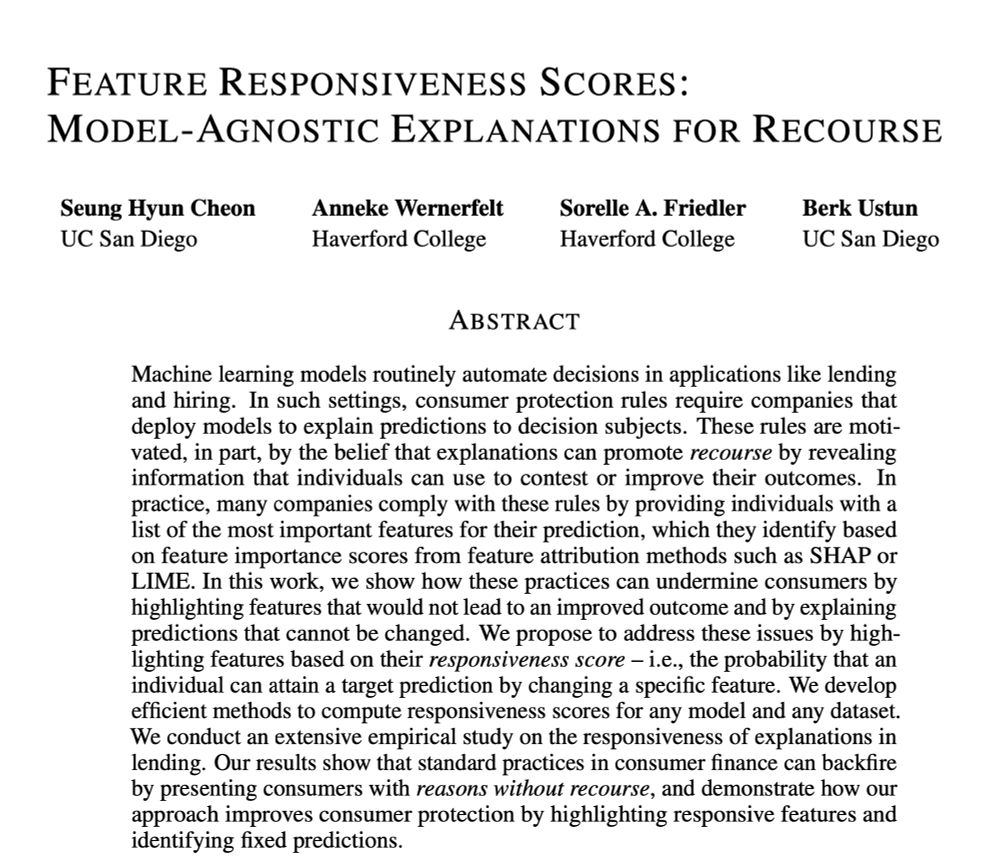harry.scheon.com

Plus - as we show - it also won't give recourse.
In a paper at #ICLR we introduce feature responsiveness scores... 1/
arxiv.org/pdf/2410.22598

Plus - as we show - it also won't give recourse.
In a paper at #ICLR we introduce feature responsiveness scores... 1/
arxiv.org/pdf/2410.22598
– Diagnoses from unreliable tests
– Outcomes from noisy electronic health records
In a new paper w/@berkustun, we study how this subjects individuals to a lottery of mistakes.
Paper: bit.ly/3Y673uZ
🧵👇

– Diagnoses from unreliable tests
– Outcomes from noisy electronic health records
In a new paper w/@berkustun, we study how this subjects individuals to a lottery of mistakes.
Paper: bit.ly/3Y673uZ
🧵👇
In our latest w @anniewernerfelt.bsky.social @berkustun.bsky.social @friedler.net, we show how existing explanation frameworks fail and present an alternative for recourse

In our latest w @anniewernerfelt.bsky.social @berkustun.bsky.social @friedler.net, we show how existing explanation frameworks fail and present an alternative for recourse

